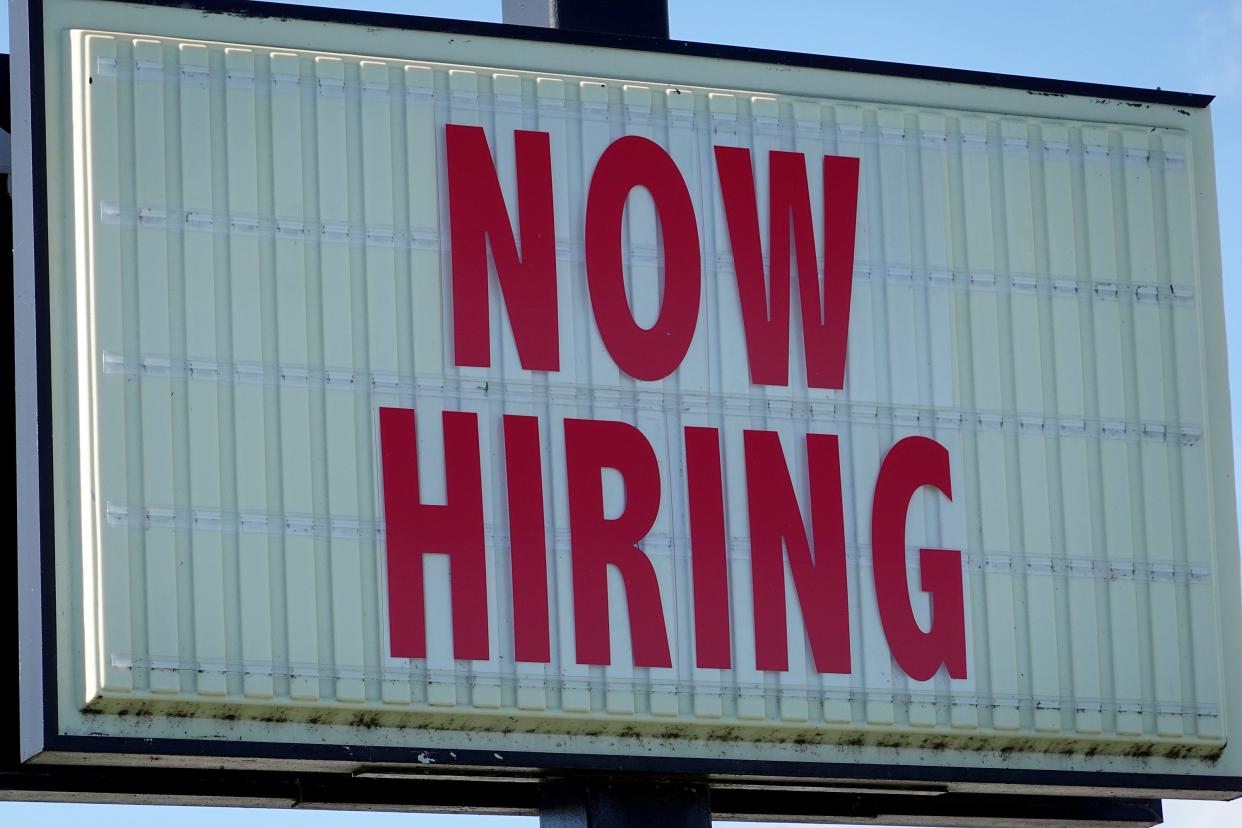May jobs report released: Booming 339,000 jobs added as unemployment rises to 3.7%
U.S. hiring accelerated in May as employers added a booming 339,000 jobs and the labor market shrugged off high interest rates and persistent inflation.
The unemployment rate, which is calculated from a separate survey of households, rose from a five-decade low of 3.4% to 3.7%, the Labor Department said Friday. That's the highest since October.
Economists surveyed by Bloomberg had estimated that 195,000 jobs were added last month.
Also, payroll gains for March and April were revised up by a total of 93,000, depicting stronger hiring in late winter and early spring than believed.
Is there a labor shortage: It's easing in most places, but not much in the South. Here's why.
Donut Day Deals: Get free donuts at Krispy Kreme, Dunkin' and more Friday

The job market has been remarkably sturdy despite the Federal Reserve’s aggressive interest rate hikes aimed at tamping down hiring and wage growth, and wrestling down inflation.
Fed officials have said they could pause the rate increases at a meeting this month but the blockbuster May jobs report and more worrisome data on inflation later this month could scuttle that plan.
S&P 500
The main stock market gauge, the S&P 500 index, rose 61 points, or 1.4%, to 4,282 in early afternoon trading on Friday, while the Dow Jones Industrial Average climbed 635 points, or 1.9%, to 33,697. The indices got a boost after the jobs report, which also showed, perhaps more importantly for markets, that increases for workers' pay also slowed even as hiring strengthened. Wages are a driver of inflation.
Will the housing market crash? What experts say about the possibility in 2023.
10-year Treasury yield
Traders are increasingly expecting the Fed to follow up the pause with a July hike to interest rates, according to data from CME Group. That helped push Treasury yields higher. The yield on the 10-year Treasury climbed to 3.63% from 3.60% late Thursday. It helps set rates for mortgages and other important loans.
The two-year Treasury yield, which moves more on expectations for Fed action, rose to 4.41% from 4.34%.
What is the wage growth rate?
In a more encouraging sign, despite last month's hiring frenzy, average hourly earnings rose 11 cents to $33.44, nudging down the yearly increase to 4.3% from 4.4%. That should give the Fed some solace that pay increases and inflation are continuing to gradually moderate.
"The data show that job growth is continuing at a rapid pace, but wage pressures are not building," says Rubeela Farooqi, chief U.S. economist of High Frequency Economics. Despite the vigorous job gains, she says the modest average wage increase should keep the Fed on track to hold rates steady this month.
Not equal: Biden administration rolls out plan to fight discrimination in home appraisals
What industries are seeing job growth?
Professional and business services led the job gains with 64,000. Health care added 52,000; leisure and hospitality, the sector hit hardest by the pandemic, added 48,000, mostly in restaurants and bars; and construction, 25,000. Government added 56,000 jobs, mostly at state and local agencies.
Manufacturing, which has contracted for six straight months, cut 2,000 jobs.
Job growth generally has slowed in recent months as interest rates have climbed and recession fears have grown but the numbers have been volatile. Companies frustrated by pandemic-related worker shortages continue to snap up workers and minimize layoffs. Unusually warm weather also has bolstered job growth in recent months.
Employers posted a historically high 10.1 million job openings in April, up from 9.7 million the prior month and reversing a recent slowing trend, Labor said this week. At the same time, the number of people quitting jobs fell to the lowest level in two years in a sign that workers are less confident they can switch jobs to notch big pay increases, a positive development from the Fed's perspective.
Homebase, which makes employee scheduling software for small businesses, said wages fell last month for the first time since 2021.
While worker shortages bedevil employers, they have been easing across most of the U.S. as Americans sidelined by the pandemic filter back into the work force. But businesses still struggling to find employees typically bring them on early in the year ahead of the spring hiring season, leaving a smaller labor supply that was likely to dampen May's job growth, Goldman Sachs says.
Hiring then tends to rebound in June as high school and college students seek summer jobs, the research firm says.
Another factor weighing on May’s payroll gains were stricter bank lending standards in the wake of the collapse of several regional banks plagued by deposit runs. Industries such as restaurants and hotels rely on credit to pay workers. The tougher loan criteria likely reduced job growth by about 25,000, Goldman estimates.
This article originally appeared on USA TODAY: Jobs report for May 2023: 339,000 jobs added despite high inflation
